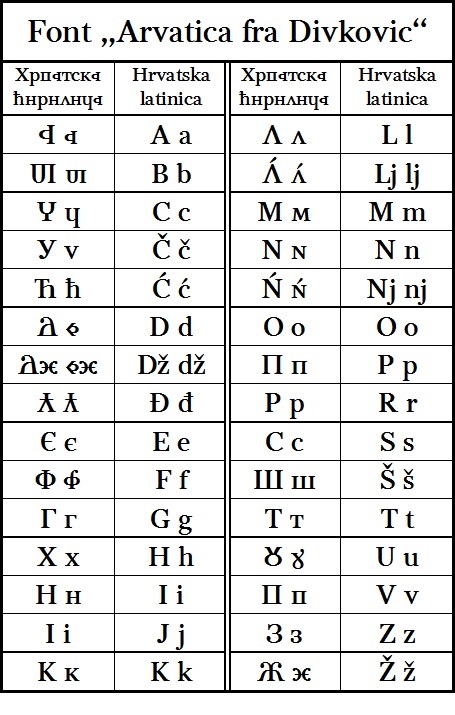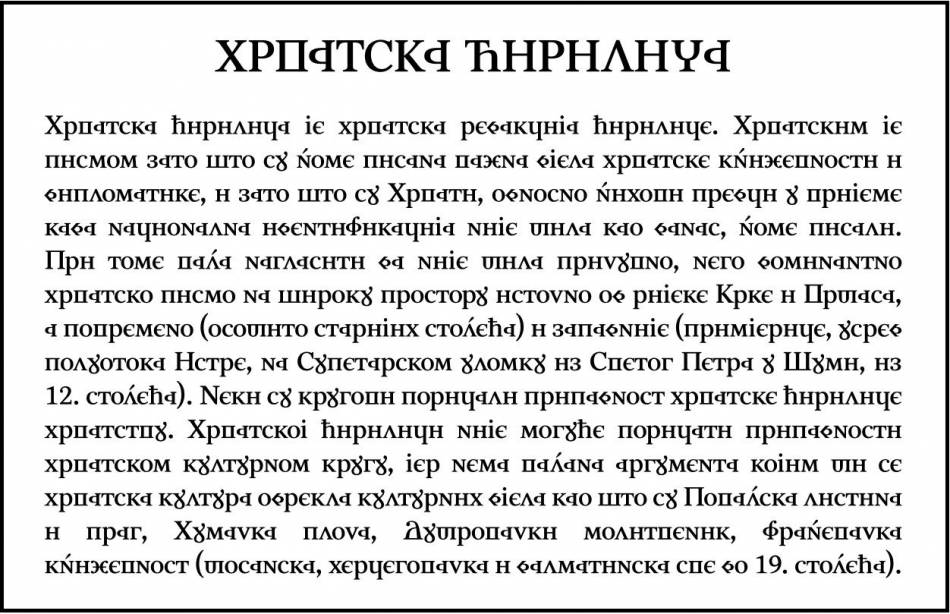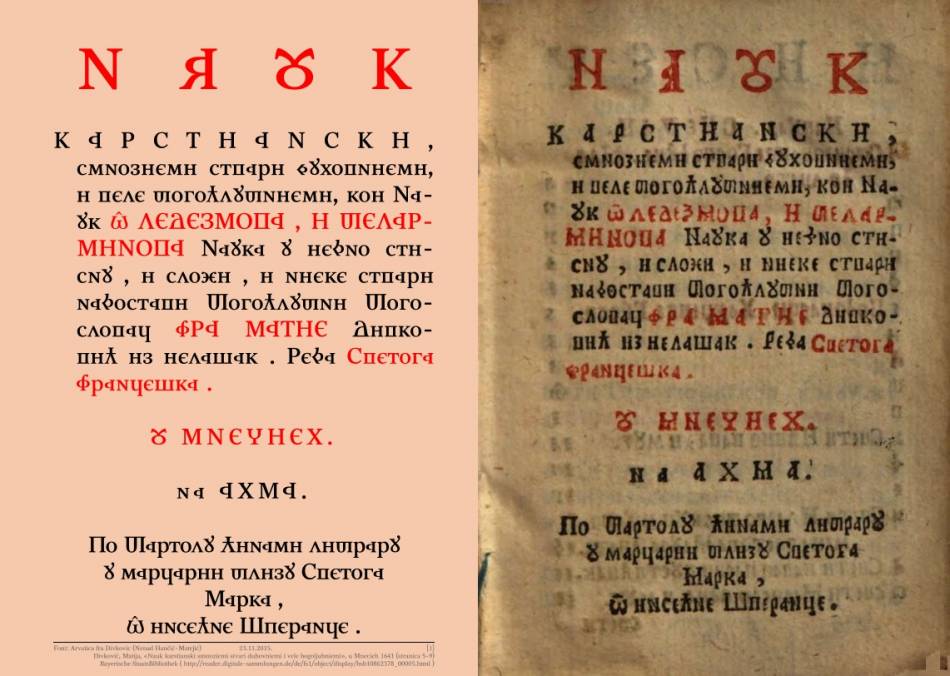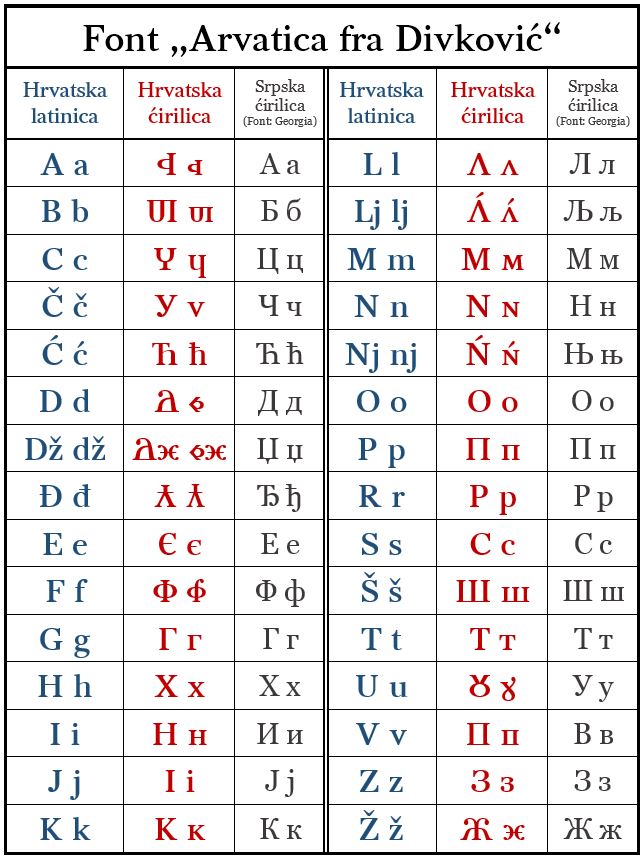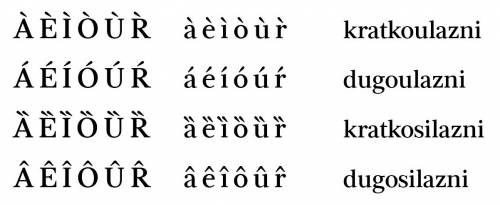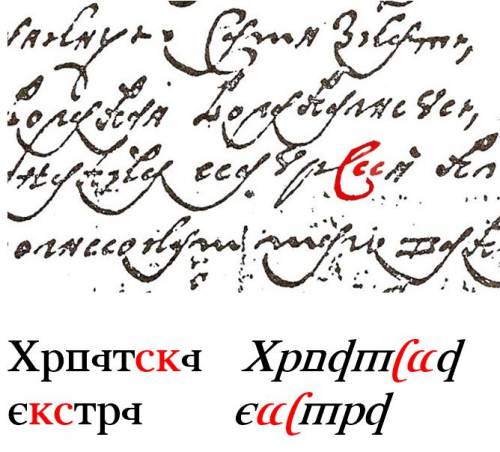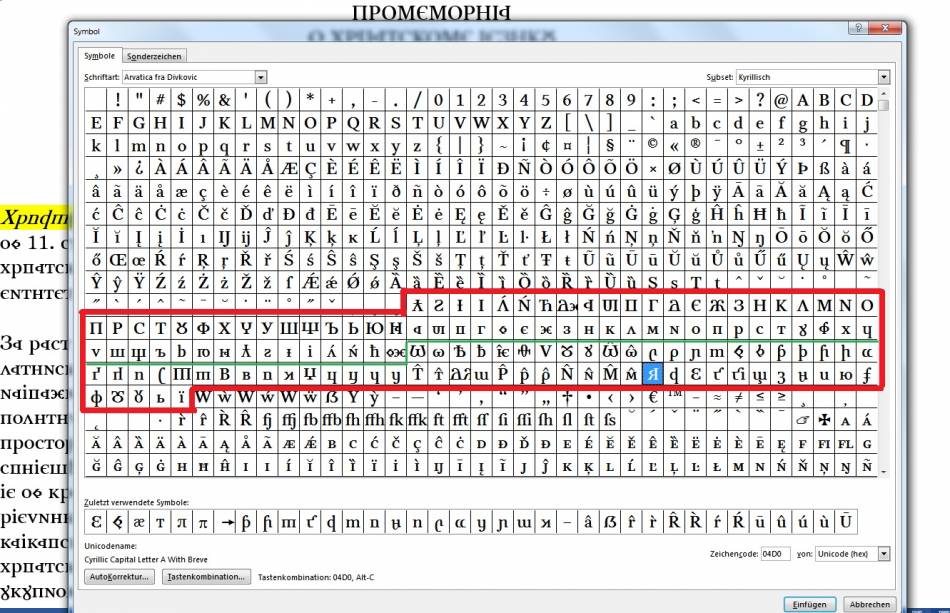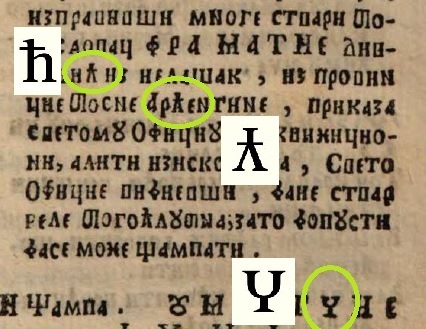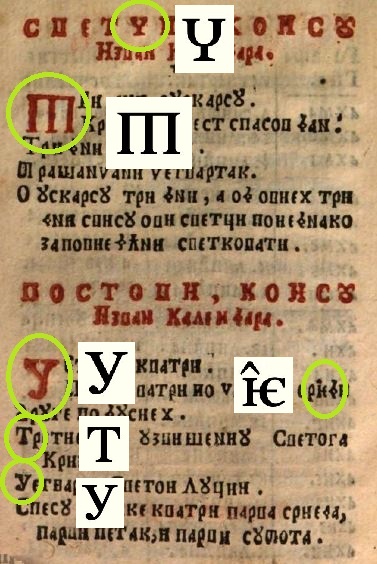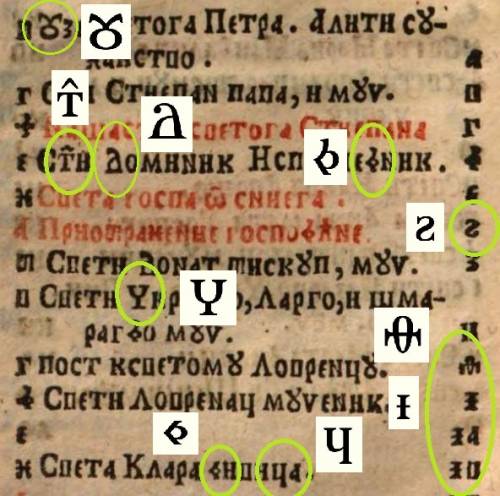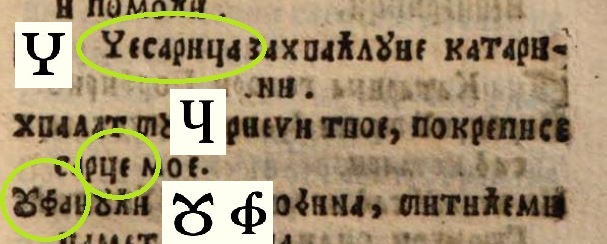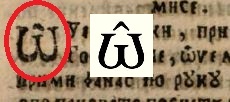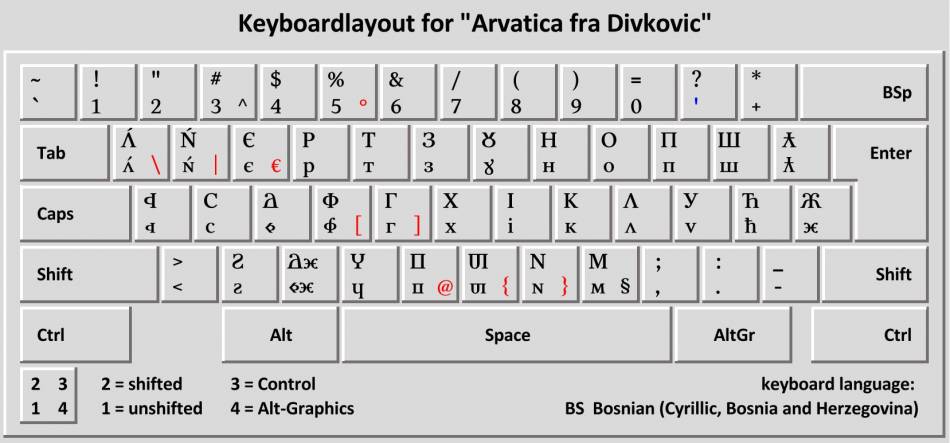Table of Contents
Font »Arvatica fra Divković«
A font for Croatian Cyrillic
All font characters of the Croatian Cyrillic alphabet are based on graphic solutions which ones the ancient Bosnian writer Matija Divković used in his printed editions.
Furthermore, many other works created by the Bosnian Franciscans have been printed using these graphic solutions in the past centuries. Thus, the shape of any letter is not fictional.
Only the orthographic system - especially the relationship of graphemes to phonemes - has been adapted to the actual conditions of the Croatian language in agreement with Prof. Mateo Žagar, PH.D, from the University of Zagreb.
Among other things, this font also includes two different glyphs for the old letter »djerv«: one for the sound ‹đ› and one for the sound ‹ć›, which also was derived from a variant of »djerv«.
To display the sounds ‹Lj› and ‹Nj› for which one Divković used »đl« and »đn« (according to Italian influence), this font uses diacritical marks above the letters »L« and »N«. These diacritics are in use after the Macedonian Cyrillic alphabet, which also palatalize the letters »G« and »K« in the same way.
In the history of the Croatian Cyrillic script several solutions for displaying the sound ‹j› have been used but unfortunately not in a consistent manner. In order to clarify the issue, Prof. Žagar and me made an agreement regarding the use of the glyph »I/i« for the sound ‹j›, as it is known in the Slavic Cyrillic writing (e.g., in the Ukrainian Cyrillic alphabet).
This approach should help dispelling any possible doubts when reading the Croatian Cyrillic script.
In the end, the Croatian Cyrillic finally got this look:
Example text on Croatian Cyrillic:
An example of an old text, compared with the font »Arvatica fra Divković«:
Comparison of Croatian Cyrillic with Serbian Cyrillic:
Accents in Croatian Latin:
Display of the grapheme group italic small »s« and »k« in Croatian Cyrillic:
Selection of additional graphemes for the Croatian Cyrillic alphabet in the font »Arvatica fra Divković«:
Comparison of some letters in this font with the letters of Divković:
Keyboard layout for the Croatian Cyrillic alphabet
Examples
| PDF-Examples prescribed with the font »Arvatica fra Divković« | |||
|---|---|---|---|
| Nauk karstianski 1641 | Article »Croatian Cyrillic« from Croatian Wikipedia | Memorandum to the Croatian language | |
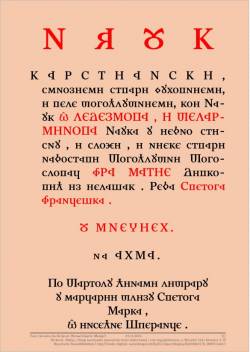 |  | 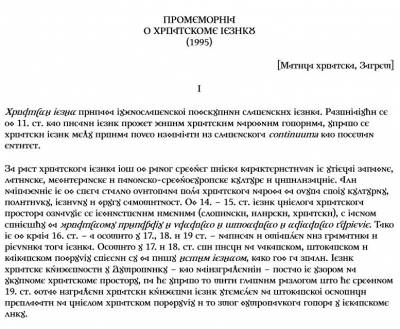 | |
Installation and use of the font
(At present, unfortunately, only in Croatian)
License
The exact wording of the license conditions can be found under the following link:
https://creativecommons.org/licenses/by-sa/3.0/de/deed.en
